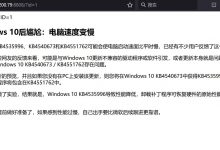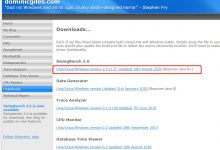一、概述
sql语句执行慢,大部分情况下建个索引就快了,但有些时候索引好像不起作用,这是什么原因导致的呢?结合日常经验,我总结了以下索引用不到的情况。
- 返回的行数比例大
- 不等于,not in,is null
- 列上有运算
- 列上有函数
- 隐式转换
- 列在组合索引的中间或右边
- 统计信息不正确
- 索引失效
二、环境准备
oracle 11g数据库
create table test as select * from dba_objects;update test set generated = null where object_id < 20;alter table test add str_id varchar2(10);update test set str_id = object_id;create index idx_1 on test(object_id);create index idx_2 on test(temporary);create index idx_3 on test(generated);create index idx_4 on test(created);create index idx_5 on test(str_id);create index idx_6 on test(object_type,data_object_id);create index idx_7 on test(namespace);begindbms_stats.gather_table_stats(ownname => \'SCOTT\',tabname => \'TEST\',estimate_percent => dbms_stats.auto_sample_size,cascade => true,method_opt => \'for all columns size auto\',no_invalidate => false);end;/begindbms_stats.gather_table_stats(ownname => \'SCOTT\',tabname => \'TEST\',estimate_percent => dbms_stats.auto_sample_size,cascade => true,method_opt => \'for columns temporary size 2, namespace size 1\',no_invalidate => false);end;/
三、开始实验
1) 返回的行数比例大
返回行数多的不走索引
a. select * from test where object_id > 20000; // 索引b. select * from test where object_id > 20; // 全表select count(*) from test; // 13544行select count(*) from test where object_id > 20; // 13525行select count(*) from test where object_id > 20000; // 0行
返回的行数除以表的总行数的值越小,表示列的选择率越高,使用索引的概率就越大
2) 不等于,not in,is null
test表的temporary列只有两个值(\’Y\’,\’N‘),以下两条sql返回的结果一样,<>不走索引
a. select * from test where temporary = \'Y\'; // 索引b. select * from test where temporary <> \'N\'; // 全表
以下两条sql返回的结果一样,not in不走索引
c. select * from test where temporary in (\'Y\'); // 索引d. select * from test where temporary not in (\'N\'); // 全表
generated上面有索引,而且返回出来的行也很少,但是is null不走索引
select count(*) from test where generated is null; // 18行e. select * from test where generated is null; // 全表
3) 列上有运算
以下两条sql返回的结果一样,但列上有运算的不走索引
a. select * from test where object_id + 1 > 20000; // 全表b. select * from test where object_id > 20000 - 1; // 索引
4) 列上有函数
以下两条sql执行结果一样,但列上有函数的不走索引
a. select * from test where to_char(CREATED, \'yyyy-mm-dd hh24:mi:ss\') = \'2021-04-01 22:24:03\'; // 全表b. select * from test where CREATED = to_date(\'2021-04-01 22:24:03\', \'yyyy-mm-dd hh24:mi:ss\'); // 索引
5) 隐式转换
以下两条sql结果一样,发生隐式转换的不走索引
a. select * from test where str_id = \'3\'; // 索引b. select * from test where str_id = 3; // 全表
当比较一个字符型和数值型的值时,ORACLE会把字符型的值隐式转换为数值型,执行计划里面显示filter(TO_NUMBER("STR_ID")=3),对应就是这个列上自动加了to_number函数
如果列是数字类型呢,以下两个sql都会走索引,这是因为\’3\’会变成3,没有发生列的隐式转换
c. select * from test where object_id = \'3\'; // 索引d. select * from test where object_id = 3; // 索引
平常在编写sql时需要留意字段的类型,避免隐式转换。
6) 列在组合索引的中间或右边
data_object_id上有索引,而且返回的行数也很少,但是由于该列值不在索引的左边,所以无法走索引
a. select count(*) from test where data_object_id = 3; // 1行b. select * from test where data_object_id = 3; // 全表
7) 统计信息不正确
select count(*), namespace from test group by namespace;COUNT(*) NAMESPACE---------- ----------10983 111 51683 23 211575 410 535 24190 89 3813 231 646 31 3621 103 9
当查询条件namspace=1时,返回10983行,以下sql明显应该走全表扫描,但是却误走了索引
a. select * from test where namespace = 1; // 索引
重新收集列的统计信息
begindbms_stats.gather_table_stats(ownname => \'SCOTT\',tabname => \'TEST\',estimate_percent => dbms_stats.auto_sample_size,cascade => true,method_opt => \'for columns namespace size auto\',no_invalidate => false);end;/
现在执行计划就正确了,走全表,因为返回的行数多
b. select * from test where namespace = 1; // 全表
以下是查统计信息sql
表 select table_name,num_rows,blocks,partitioned,tablespace_name,last_analyzed from user_tables where table_name=trim(upper(\'&table_name\'));列 select table_name,column_name,num_distinct,num_nulls,num_buckets,histogram,last_analyzed from user_tab_col_statistics where table_name=trim(upper(\'&table_name\')) order by 1,2,3;
8) 索引无效
索引有时候会因为数据库的操作而失效,例如移动表
alter table test move;
以下sql应走索引,却走了全表
a. select * from test where object_id = 3; // 全表
查看索引状态都是UNUSABLE
select a.*,b.status,b.last_analyzed from(select table_name,index_name,listagg(column_name,\',\') within group(order by column_position) as columns from user_ind_columns group by table_name,index_name) a,(select table_name,index_name,status,last_analyzed from user_indexes) bwhere a.table_name=b.table_name and a.index_name=b.index_name and a.table_name=trim(upper(\'&table_name\')) order by 1,2,3;
重建索引
alter index idx_1 rebuild online;
再次执行sql,执行计划就正确了,走索引
b. select * from test where object_id = 3; // 索引
四、总结
- 我们在编写sql的时候,首要考虑sql执行的准确性,其次也需要考虑sql执行的效率。
- 并不是索引越多越好,使用索引也并不一定会加快sql的查询效率,这些都需要我们去不断学习。
 爱站程序员基地
爱站程序员基地


